If you love your reef tank, you probably hate algae. Algae can ruin the beauty of your tank, choke your corals, and even harm your fish. But not all algae are bad. Some algae can actually help your tank by providing food, oxygen, and color. Some algae can also help keep your water stable and clean. The trick is to know which algae are good and which ones are bad and how to deal with them effectively.
In this article, we’ll show you the 7 most common types of algae that you might find in your reef tank. We’ll also give you some tips on how to prevent or get rid of them and how to keep a healthy balance of algae in your tank.
1. Diatom Algae
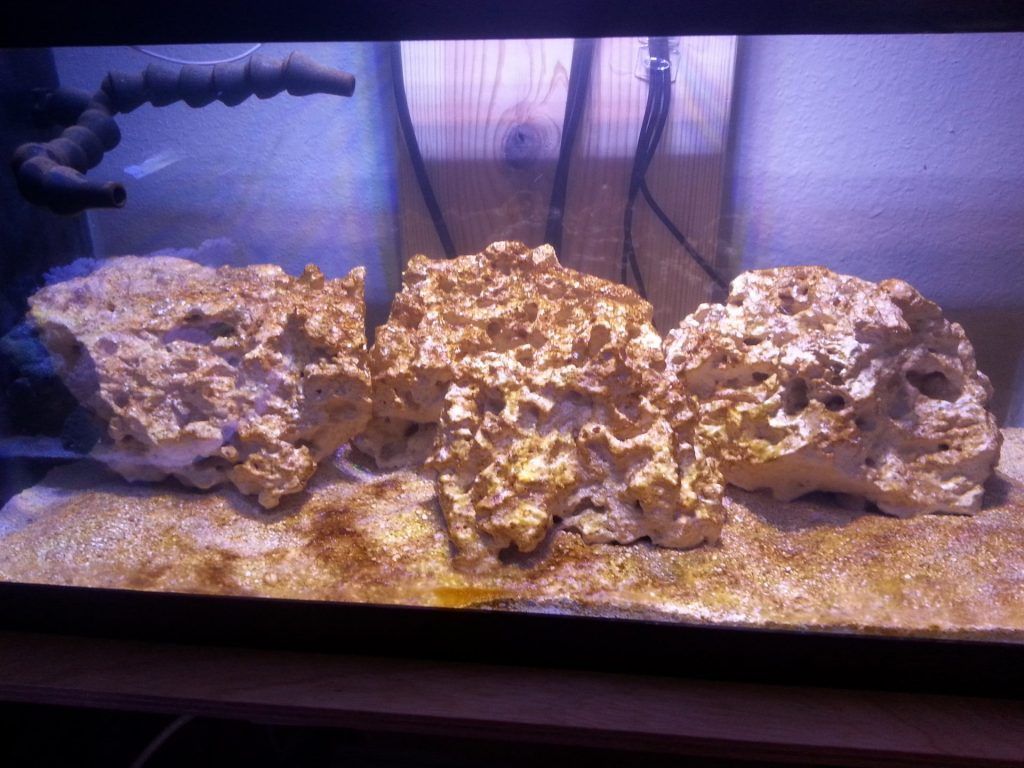
Diatom algae are one of the first types of algae that you’ll see in your new tank. They’re brown algae that look like brown dust or film on your rocks, sand, glass, and equipment. They feed on silicates and nitrates in your water, which are usually high in new tanks.
Diatom algae won’t hurt your fish or corals, but they’ll make your tank look dirty and boring. They can also clog up your filters and pumps if you don’t remove them. Diatom algae usually go away by themselves after your tank has cycled and the silicate and nitrate levels have gone down. But if they stick around or come back, you might need to do something about them.
How to Prevent or Treat Diatom Algae
- Use RO/DI water for water changes and top-offs. Tap water might have silicates and nitrates that feed diatom algae.
- Test your water regularly for silicate and nitrate levels. Keep them as low as you can by using a good protein skimmer, filter media, and water changes.
- Use a phosphate remover to lower phosphate levels. Phosphate can also help diatom algae grow.
- Increase the flow in your tank with powerheads or wavemakers. This will stop diatoms from settling on surfaces and improve oxygen levels.
- Clean your tank regularly with a scraper, siphon, or toothbrush. Remove any diatoms you see on the glass, rocks, sand, or equipment.
- Add some critters that eat diatoms. Some examples are cerith snails, nerite snails, trochus snails, astraea snails, otocinclus catfish, amano shrimp, and black mollies.
2. Cyano (Red Slime)
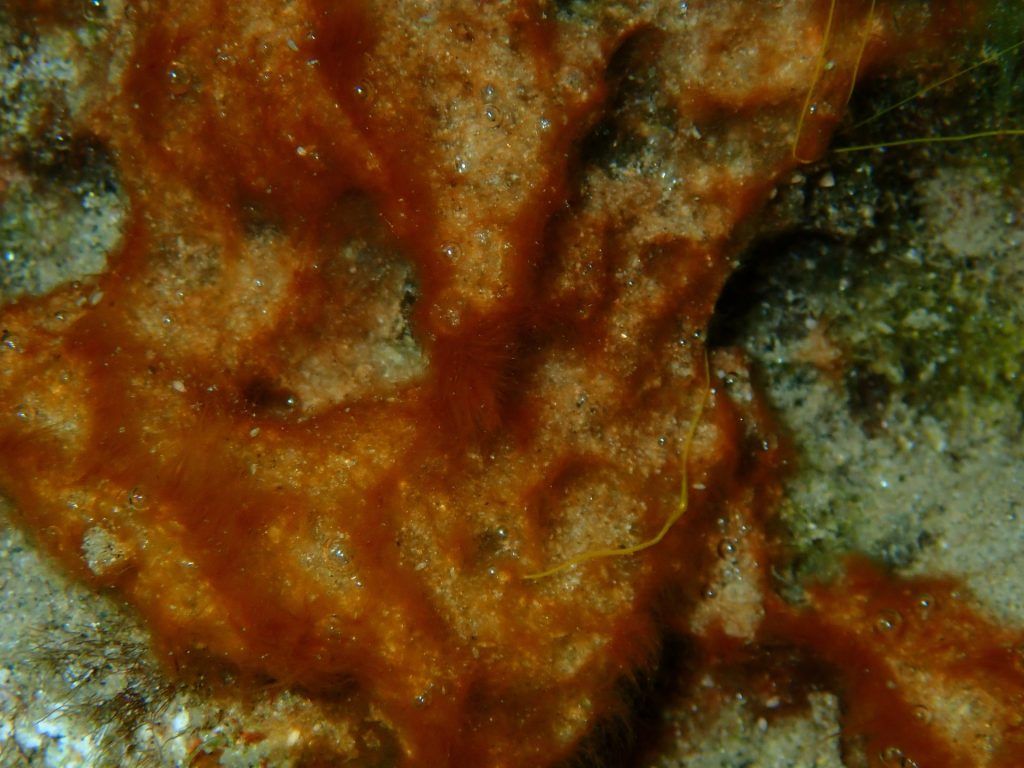
Cyano is not really an algae, but a type of bacteria that acts like an algae. It’s also one of the most common pests in reef tanks. Cyano forms slimy mats that can be red, green, blue, or brown. Cyano can grow on any surface in your tank, but it likes low-flow areas where dirt builds up. Cyano can be toxic to your fish and corals if it releases cyanotoxins. Fortunately, most species of cyano we find in our reef tanks do not produce any toxins. It will, however, suffocate your corals and use up oxygen in your water, regardless of the species. Cyano can be hard to get rid of because it can grow even in low-nutrient conditions. It can also change its color and resist some chemicals.
How to Prevent or Treat Cyano
- Increase the flow in your tank with powerheads or wavemakers. This will stop cyano from forming mats and improve oxygen levels.
- Reduce the waste in your tank by feeding less, using a good protein skimmer, filter media, and water changes.
- Test your water regularly for nitrate and phosphate levels. Keep them as low as you can by using a good protein skimmer, filter media, water changes, and phosphate removers.
- Use RO/DI water for water changes and top-offs. Tap water might have nutrients that feed cyano growth.
- Suck out any cyano mats that you see in your tank. Be careful not to break them up as this might spread them more.
- Add some critters that eat cyano. Some examples are blue leg hermit crabs, scarlet hermit crabs, nassarius snails, sand sifting starfishes, and emerald crabs.
- Use a chemical that kills cyano. Some examples are Chemi-Clean, Red Slime Remover, and UltraLife Red Slime Remover. Follow the directions carefully and watch your water quality and oxygen levels during and after the treatment.
3. Green Hair Algae

Although not number 1 on the list, green hair algae (GHA), is probably the single most common algae reef-keepers deal with on a regular basis. It is a simple algae that grows in long, thin strands. They can be bright green, dark green, or yellow-green. Green hair algae can grow on any surface in your tank, but it prefers bare rocks or rocks that have been leaking phosphate. Green hair algae can quickly take over your tank and compete with your corals for light and nutrients.
Green hair algae won’t hurt your fish or corals, but they’ll make your tank look messy and unattractive. Many people use algae scrubbers to grow GHA as a way to control nutrient levels and prevent other, worse, algaes.
Although this isn’t very common, GHA can also get caught on your fish and invertebrates and damage their gills or shells. High phosphate levels usually cause green hair algae, but they can also grow in low-nutrient conditions if they have enough light.
How to Prevent or Treat Green Hair Algae
- Test your water regularly for phosphate levels. Keep them as low as you can by using a good protein skimmer, filter media, water changes, and phosphate removers.
- Use RO/DI water for water changes and top-offs. Tap water might have phosphates that feed green hair algae growth.
- Reduce the light intensity or duration in your tank. Green hair algae need light to make food and grow.
- Pull out any green hair algae that you see in your tank. Use a scraper, tweezers, or toothbrush to yank them out from the rocks, sand, or equipment.
- Add some critters that eat green hair algae. Some examples are turbo snails, mexican turbo snails, margarita snails, lawnmower blennies, tangs, foxface rabbitfishes, and siamese algae eaters.
4. Turf Algae
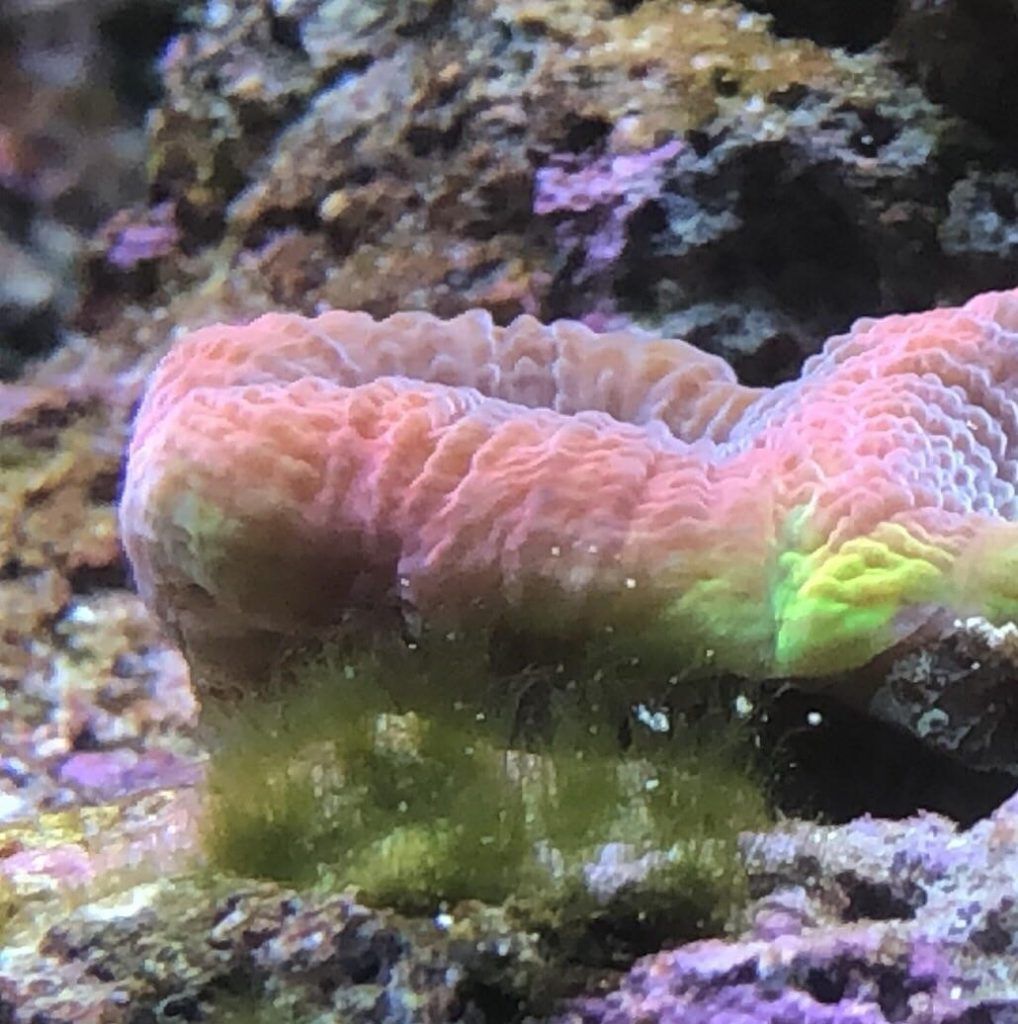
Turf algae is similar to green hair algae but it has thicker and shorter blades. It can look green, red, or brown. Turf algae can also grow on any surface in your tank, but it seems to prefer rocks or corals that have been damaged or stressed. If left unchecked, Turf algae will easily take over your tank and compete with your corals for light and nutrients.
Turf algae won’t directly hurt your fish or corals, but it’ll make your tank look dull and dirty. Indirectly it can block light from reaching corals and kill them via starvation. It can also trap dirt and create dead zones in your tank. High nitrate levels usually cause turf algae, but it is able to grow in low-nutrient conditions if there is enough light.
How to Prevent or Treat Turf Algae
- Test your water regularly for nitrate levels. Keep them as low as you can by using a good protein skimmer, filter media, water changes, and nitrate removers.
- Use RO/DI water for water changes and top-offs. Tap water might have nitrates that feed turf algae growth.
- Reduce the light intensity or duration in your tank. Turf algae need light to make food and grow.
- Pull out any turf algae that you see in your tank. Use a scraper, tweezers, or toothbrush to yank them out from the rocks, sand, or equipment.
- Add some critters that eat turf algae. Some examples are turbo snails, mexican turbo snails, margarita snails, cerith snails, urchins, tangs, and foxface rabbitfishes.
5. Green Bubble Algae
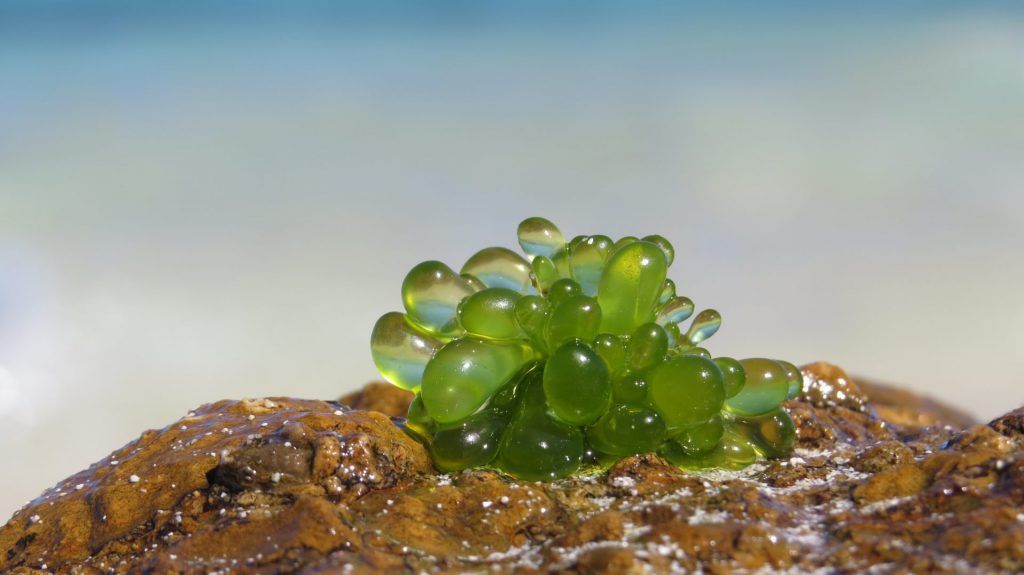
Green bubble algae is a type of macroalgae that forms green balls or bubbles on the rocks or glass in your tank. They can be pea-sized to golf ball-sized. Green bubble algae can look pretty in small amounts but can be a pain if it multiplies and spreads fast.
Green bubble algae doesn’t hurt fish or corals, but it does make your tank look cluttered and unnatural. The bubbles can also pop and release spores that can start new colonies in other parts of your tank, allowing it to spread quickly. Green bubble algae is typically caused by high phosphate levels, but they can also grow in low-nutrient conditions if they have enough light.
How to Prevent or Treat Green Bubble Algae
- Test your water regularly for phosphate levels. Keep them as low as you can by using a good protein skimmer, filter media, water changes, and phosphate removers.
- Use RO/DI water for water changes and top-offs. Tap water might have phosphates that feed green bubble algae growth.
- Reduce the light intensity or duration in your tank. Green bubble algae need light to make food and grow.
- Pick off any green bubble algae that you see in your tank. Use a scraper, tweezers, or toothbrush to pull them off from the rocks or glass. Be careful not to pop them as this might spread them more. (Best Option)
- Add some critters that eat green bubble algae. Some examples are emerald crabs, peppermint shrimps, and lettuce nudibranchs.
6. Dinoflagellates
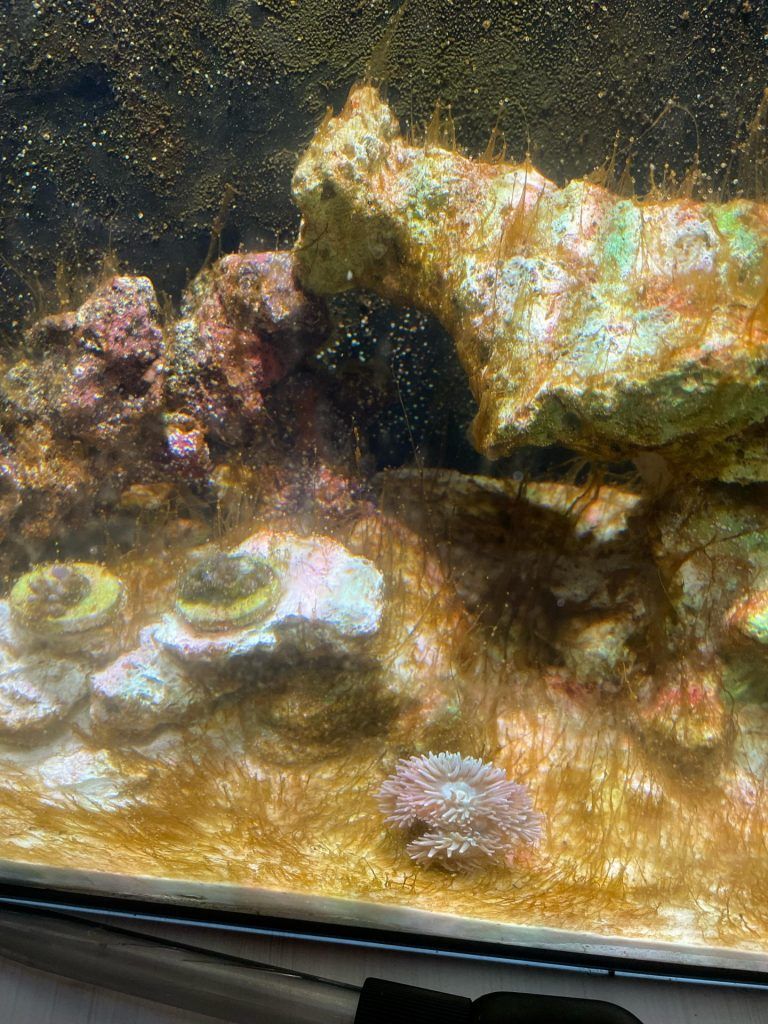
Dinoflagellates are string like algae that can cause red tides or brown slime in your tank. They can be brown, green, or red. Dinoflagellates will grow on any surface in your tank, but they like low-flow areas where detritus builds up.
Dinoflagellates can be bad for your fish and corals if they make toxins or use up to much oxygen in your water. If allowed to grow and take over they can also smother and kill corals.
Dinoflagellates are one of the hardest types of algae to get rid of because they can change their color and resist some chemicals. They can also make cysts that survive tough conditions and return later. High waste levels usually cause dinoflagellates, but they can also grow in low-nutrient conditions if they have enough light.
How to Prevent or Treat Dinoflagellates
- Increase the flow in your tank with powerheads or wavemakers. This will stop dinoflagellates from forming mats and improve oxygen levels.
- Reduce the waste in your tank by feeding less, using a good protein skimmer, filter media, and water changes.
- Test your water regularly for nitrate and phosphate levels. Keep them as low as you can by using a good protein skimmer, filter media, water changes, and nitrate and phosphate removers.
- Use RO/DI water for water changes and top-offs. Tap water might have nutrients that feed dinoflagellate growth.
- Suck out any dinoflagellate mats that you see in your tank. Be careful not to break them up as this might spread them more.
- Use a UV sterilizer to kill dinoflagellates in the water. Follow the directions carefully and watch your water quality and oxygen levels during and after the treatment.
- Use a chemical that kills dinoflagellates. Some examples are Dino X, Fauna Marin Ultra Algea X, and Brightwell Aquatics Erase-Cl. Follow the directions carefully and watch your water quality and oxygen levels during and after the treatment.
7. Coralline Algae
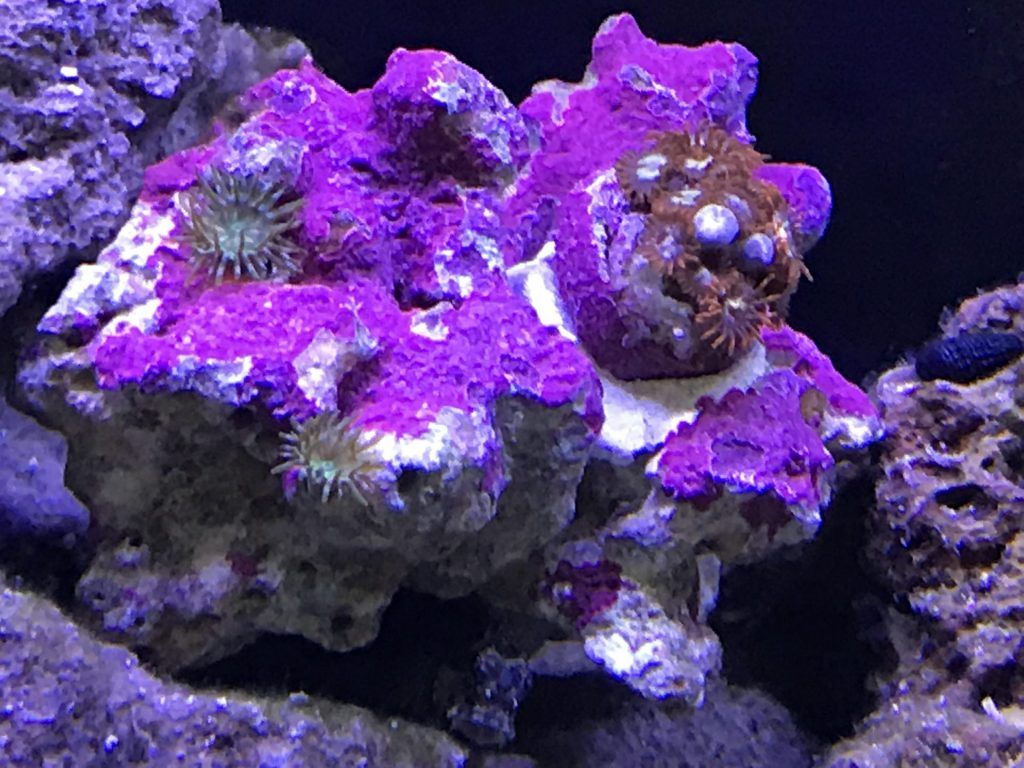
Coralline algae is the type of red algae that makes hard, colorful crusts on the rocks or glass in your tank. You’ve probably seen it in a well-established reef. It can be pink, purple, red, or green. Coralline algae is one of the good types of algae that you want in your reef tank. It can make your tank look more colorful if that’s the look you enjoy, as well as stable since it spreads between rocks and starts to adhere them together. It also prevents other bad algae from growing on the rocks by taking up the available space.
Coralline algae won’t hurt your fish or corals, but it can make your glass look cloudy and scratchy if left growing on the glass. It can also lower your water’s pH and alkalinity levels by using up available carbonate ions.
Coralline algae uses up calcium and magnesium levels to grow its crusty self. Replenishing these with water changes will allow it and everything else to thrive.
How to Encourage Coralline Algae Growth
- Test your water regularly for calcium, magnesium, pH, and alkalinity levels. Keep them at high, but optimal, levels by using a good calcium reactor, dosing pumps, buffer solutions, and water changes.
- Use RO/DI water for water changes and top-offs. Tap water might have impurities that stop coralline growth.
- Increase the light intensity or duration in your tank. Coralline algae need light to make food and grow.
- Scrape off any coralline algae that you see on the glass with a scraper or razor blade. This will make your tank look clearer and prevent scratches on the glass.
- Add some live rocks or frags that have coralline algae on them. This will bring spores that can start new colonies in other parts of your tank.
- Add some critters that help coralline growth. Some examples are chitons, limpets, and abalone.
Final Thoughts
Algae is a normal part of any reef aquarium, but they don’t have to be a headache. Most of these algaes require an initial introduction to grow, which is why they make bottled coralline algae you can add to your tank (Because that is one you actually want). By knowing the different types of algae that you might find in your tank, you can actively work to prevent introducing them into your tank via new coral frags or rocks and also deal with them effectively when they do show up.
Remember to test your water regularly, use RO/DI water, adjust your light, clean your tank, and add some critters to keep algae under control.
We hope this article has helped you learn more about the 7 most common types of algae in a reef aquarium. If you have any questions or comments, feel free to leave them below. Happy reefing!🐚
























